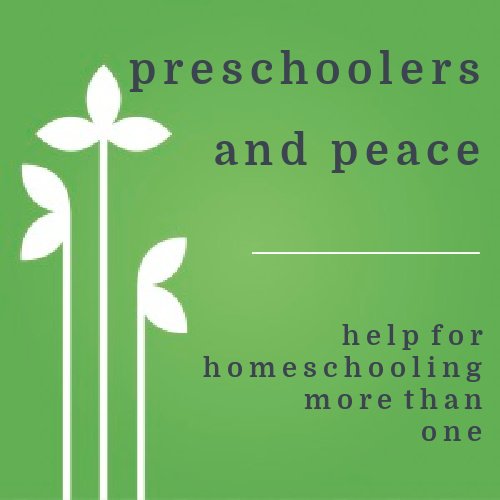Marvelous Monday- HANDWRITING and SPELLING
Just in case you're joining us for Marvelous Mondays for the first time, you can see our previous posts here:
Math- Cheryl's Review
Math- Kendra's Review
History- Cheryl's Review
History- Kendra's Review
Literature- Cheryl's Review
Literature- Kendra's Review
English and Grammar- Cheryl's Review
English and Grammar- Kendra's Review
♥
One of the best pieces of advice I received early on was to teach my kiddos to write their names with a capital letter first, followed by lower-case letters. Most of us teach our little ones to write their names in all caps, only to have to re-teach them the correct way later. Good idea, isn't it?
We begin with Ready Writer, which has been around since before we were homeschooling. Fun little exercises like "cutting brownies" (making horizontal and vertical lines through rectangular "pans") and "cutting" zig zags with "saws". Four to five-year-olds will get basic handwriting stroke practice, which is essential for legible handwriting. The workbook pages can be photocopied; we've had the same copy since 1995. Ready Writer isn't a complete program, but it's a fun way to develop fine motor skills.
After Ready Writer we move to Handwriting Without Tears. It is what it says- we've never had tears over handwriting practice. Plus, we all now sing the little ditty, "Where do you start your letters? At the top!" Handwriting Without Tears is straight-forward and laid out in a manner that is extremely homeschool-mom-friendly. The consumable workbooks can be handed right to the child and with a sentence or two of instruction, they are on their way.
The Draw Write Now series is a classic on homeschool shelves. These fun books which teach children to draw so many different subjects (people, animals, vehicles, etc.) are also teaching them basic handwriting strokes and then giving them sentences to copy which tell something about the drawing itself. Children don't even know they're doing schoolwork. Pretty tricky!
I have been reading about "cursive first", the philosophy that says children who learn cursive before manuscript have an easier time altogether learning to write. I have a friend whose four children seem to prove this philosophy, as all of them have beautiful handwriting, even at young ages.
Last September I decided to try cursive first as taught by Memoria Press's New American Cursive with my second grader, hoping that she would develop beautiful cursive. Perhaps we started too late because we haven't seen a huge difference between her handwriting and the handwriting of her siblings who learned manuscript first. Is it just us? I'd love to have testimonials from others who subscribe to the cursive first philosophy because I'm not sure which direction to go with my up-and-coming kindergartner/first grader. The New American Cursive book retails for 22.95, which I find pricey for a consumable workbook at this grade level.
With my others who've done manuscript first, we used Classically Cursive. If we're going to have them writing and copying as part of their education, should they not be writing and copying text with some worth to their souls and minds? The texts used for teaching cursive in Classically Cursive are Scripture (including the Ten Commandments), the Westminster Shorter Catechism, and the Attributes of God.
Along similar lines are copywork books which provide useful sentences or paragraphs to copy. We adore the Happy Scribe books, and each year I pair up the historical copywork with our history studies for our youngest students. Happy Scribe covers a whole lot of subjects- really, there seems to be a Happy Scribe copybook for ever interest- and because you have the ability to download and save the books to your computer, the pages are a snap to print out.
Last fall our eighth-grader came to me and said, "My handwriting is terrible. Can you get me a handwriting book?" And I ask you, who of us is going to turn down that request from a teenage son? I did a little investigating, thinking that simpler would be better, particularly since we knew for certain that we didn't want something overtly childish. We landed on Getty Dubay Italic, and I've been very happy with the improvement in his handwriting, as has he.
We'll leave the world of handwriting now and move on to spelling, which brings to the surface yet another philosophy I hold to. Ready? Spelling tests are dumb. Do we really think that memorizing a list of twenty words for a test at the end of the week is going to assure that our child will remember that "weird" is spelled with an e before an i? I mean, really. I firmly believe that good spelling comes from word usage. Over and over and over again, until the common words become familiar. One of the best ways to insure familiarity? Copywork.
And then there was my fourth child, whom we call a "math-head", but who cannot spell to save her life, despite the copious amount of copywork she's done over the past five years. Knowing I did not want to go the memorize-then-forget route, I took the plunge into Sequential Spelling and found something that made sense.
With Sequential Spelling, the child studies nothing. Instead, she remembers patterns used to spell words- even after the test. I read the word, the child writes it down and then self-corrects it immediately. The word lists are sequential and emphasize the patterns of spelling. I see our daughter stopping to think through words that stump her; even if she must do so as an adult, she'll have the advantage of remembering patterns taught through all seven levels of Sequential Spelling. It's been a winner of a curriculum in our home.
Don't forget to stop by and see Cheryl's Marvelous Monday list here!

